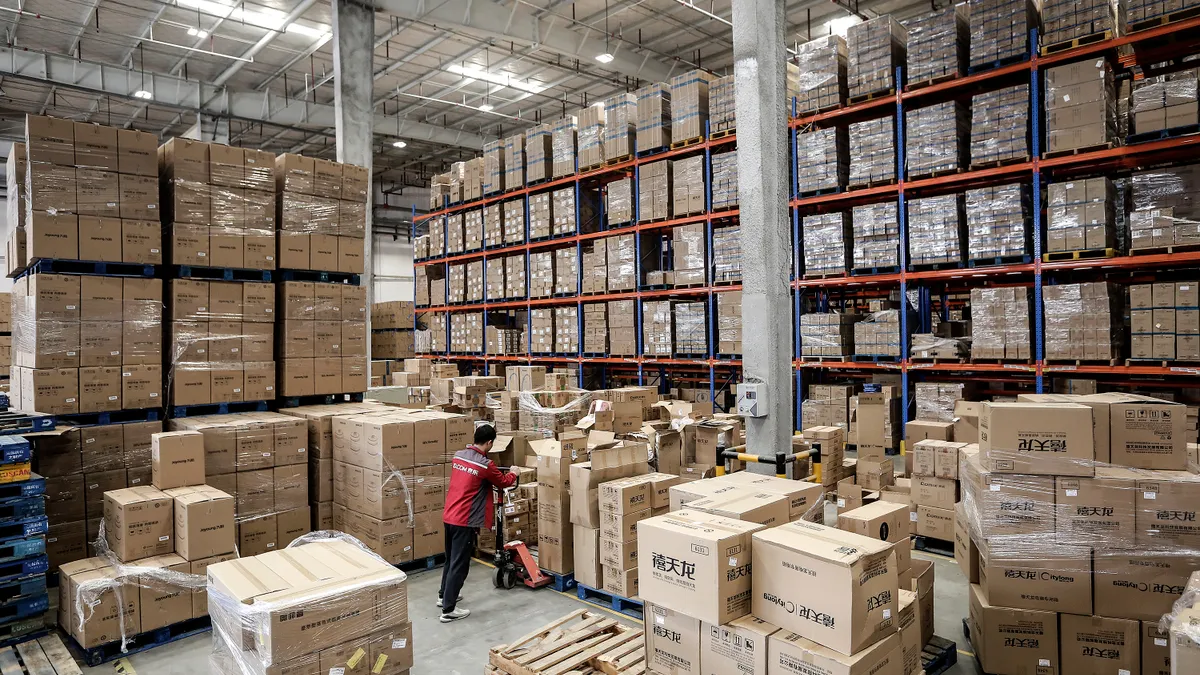This is a contributed op-ed written by Kim Doyle, leader of the supply chain and operations practice at Plante Moran, and Tim Weed, leader of the restructuring practice at Plante Moran. Opinions are the authors' own.
Car dealership lots are emptying out due to the semiconductor supply crunch. Container ships are backed up in major ports in Europe, China and the U.S. A dire labor shortage is adding to the difficulty of producing and transporting enough goods to meet surging U.S. demand.
The problems are a loud wake-up call for manufacturers that the old ways of managing supply chains are no longer adequate. The COVID-19 economic disruption has brutally exposed the shortcomings of relying solely on the dominant just-in-time system. JIT keeps inventory levels razor thin and assumes that breaks in critical supply can be readily fixed with some additional time and attention.
Now's the time for companies to take steps to shockproof their supply chains for what could be a new normal of disruptions in the years ahead. This requires a sophisticated, multi-pronged approach.
Evaluate your supply chain's health and exposure
A vital first step is to back away a bit from day-to-day operations to assess and thoroughly map your network of suppliers. Aim to identify actual and potential weaknesses in the supply chain, particularly those that could affect critical components.
- Where are the most critical items coming from?
- How vulnerable are they to bottlenecks and disruptions?
- How diversified is your supply chain?
- How sustainable is your and your suppliers' labor force given local market conditions?
It's also important to think systematically about the communications, data gathering and decision-making processes around supply chain issues. How is data being captured and verified to ensure that decisions are well-founded? How is intelligence being obtained from customers to better anticipate orders and production needs?
The answers to these and other questions will yield insights into the health of a supply chain and what needs to be done to make it more resilient now and in the future.
Get on your supplier's priority list
The analysis could make clear, for example, that it's necessary to buy critical components in advance to guarantee continued production. Stung by the 2011 Fukushima disaster, Toyota realized that it needed to stockpile certain critical components (which included semiconductors) to avoid a repeat of that supply chain disruption.
That's a big reason why the Japanese automaker was able to outsell its rivals in the North American market in recent months — displacing GM from its traditional top spot in the second quarter — before eventually succumbing to the global shortage itself and announcing production cuts in late August.
If a company hasn't done so already, this is a good time to make sure it has a strong relationship with its key suppliers and understands their pain points and needs. Understanding a supplier's profile and where you stand in relation to it are key to forming a negotiating strategy to help secure supply and avoid stockouts.
Offering them support, such as better payment terms or contractual volume order guarantees, can help you move up on their priority list and avoid encountering unpleasant — and expensive — surprises down the line. Be creative in your support and search for win-win ideas that can help both of you in the end. After all, JIT stresses both parties: your business as you aim to stay in stock, and the supplier as they try to deliver on short notice.
Switch to new suppliers, or take direct control
When a relationship with a supplier can't be fixed or has been identified as too risky, it can make sense over the medium term to identify new supply sources.
It may seem obvious, but de-risking your supply chain and spinning up a new source for critical components are critical business decisions. Sometimes it is as simple as dual qualification/validation and having a secondary source ready to go. But that can only happen with good intelligence and by asking the right questions. Switching to a new supplier is expensive, yet it may not be as costly as sticking with a problematic supplier over the long term.
Another strategy that companies can consider is taking direct control over parts of their supply chain. Vertical integration is rarely a cheap option, but it can pay off over the long term by bringing certainty to critical aspects of production and operations.
Walmart took this step recently by chartering container ships to ensure it has enough freight capacity given the congested state of shipping. Tesla is reportedly considering getting into the semiconductor-making business to secure its supply of crucial chips.
It can undoubtedly be tough to pull back and take a breath in this environment. But, doing so is essential to gain true visibility into the supply chain and to begin implementing changes that will make it resilient to this shock and future ones.






















